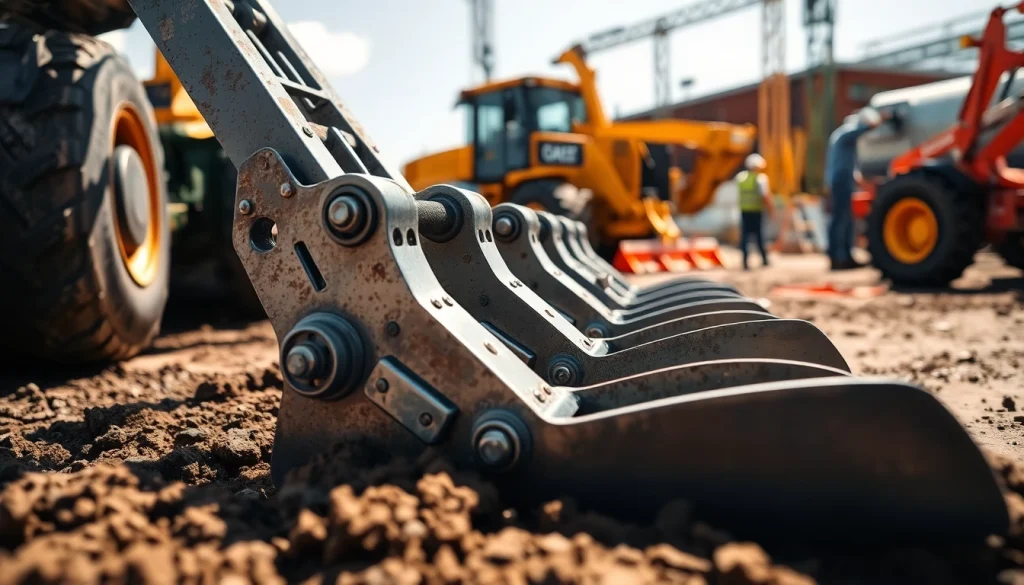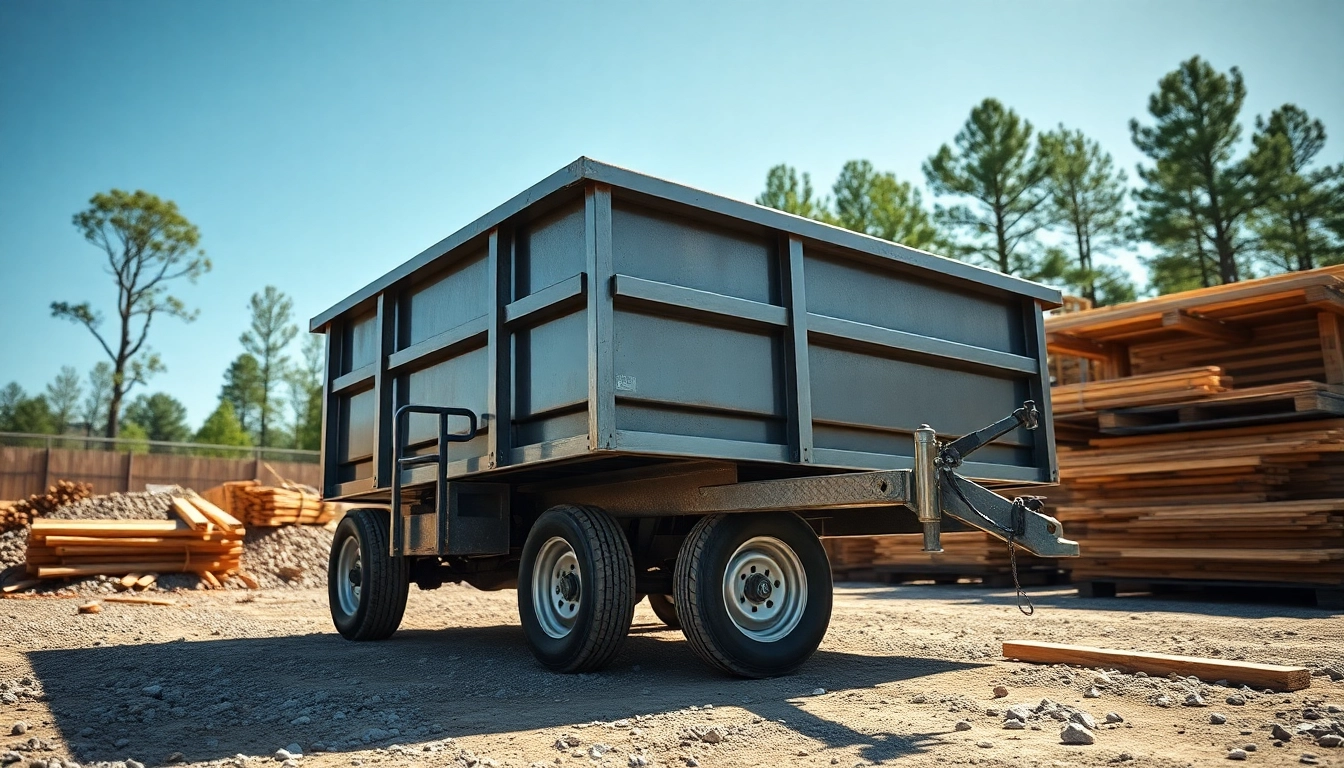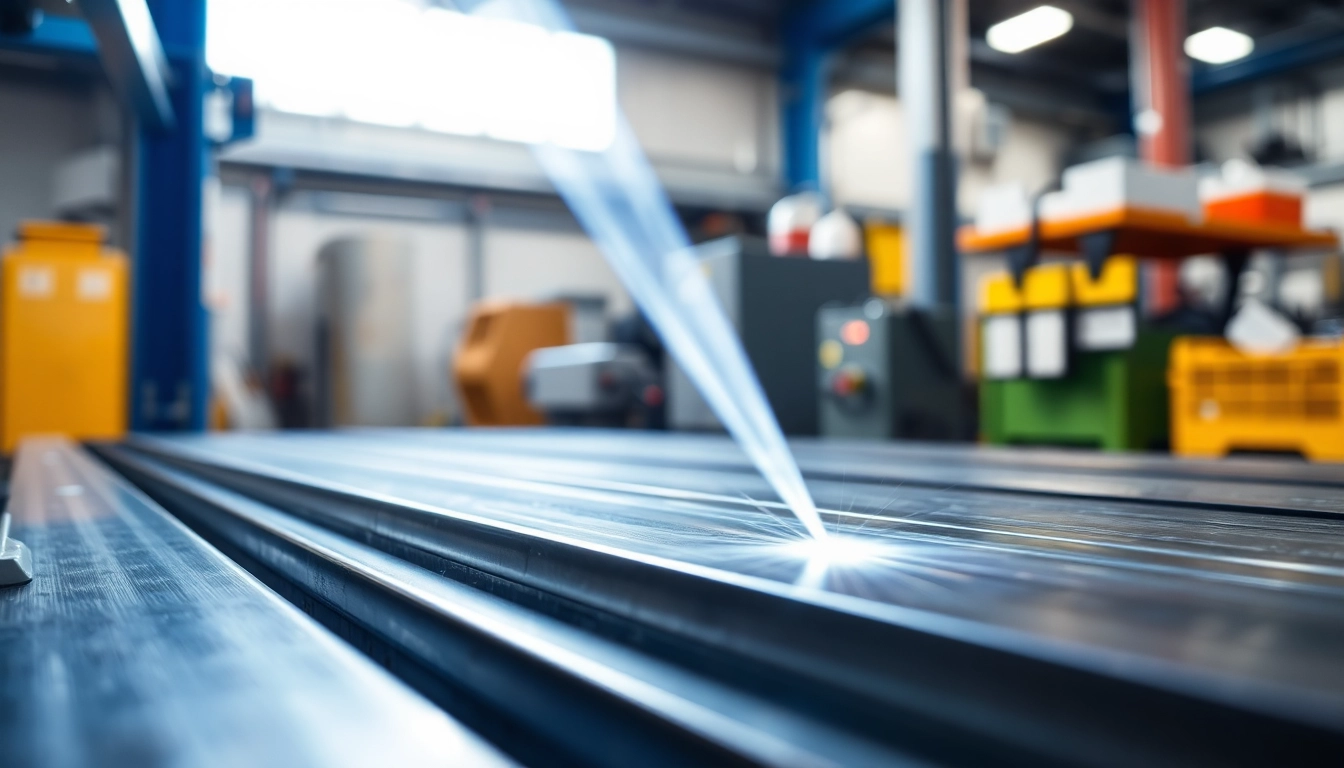
Understanding Rippers: Definition and Functionality
What Are Rippers?
Rippers are specialized attachments for heavy machinery, primarily used in the construction and mining sectors. Designed to penetrate hard soil or compacted material, these attachments significantly enhance a machine’s capability to break up ground. Operating primarily with bulldozers, excavators, or tractors, rippers can be instrumental in various soil types, serving to facilitate excavation, site preparation, and various other construction tasks. For those seeking to improve their earth-moving operations, incorporating Rippers can yield substantial efficiency gains.
Key Components of Rippers
Understanding the components of rippers is crucial for their effective usage. Key parts include:
- Shank: The primary implement that digs into the ground. It can come in various shapes and sizes depending on the intended soil type.
- Point: Located at the end of the shank, the point is designed to penetrate and break soil. Different designs can better suit rocky, clay, or loose soils.
- Frame: The structural component that connects the shank to the attachment base, ensuring durability and stability during operation.
- Mounting brackets: These allow for the convenient attachment of rippers to various types of machinery, enabling quick changes between attachments as needed.
Common Applications in Heavy Machinery
Rippers are incredibly versatile and can be used in various applications including:
- Land clearing: Rippers can prepare land for construction by breaking up hardened topsoil and other debris.
- Pipeline installation: When laying pipelines, rippers can create trenches without the need for extensive excavation.
- Mining operations: Rippers help extract minerals by breaking up rocky terrain, making it easier for hauling equipment to collect and transport materials.
- Road work: They can assist in preparing ground for road construction, ensuring a solid foundation is established.
Benefits of Using Rippers in Construction
Enhanced Soil Disturbance for Improved Digging
Rippers excel in enhancing soil disturbance, a crucial factor in improving the effectiveness of the digging and excavation processes. By breaking up hard or compacted soil, rippers create an easier environment for subsequent excavation equipment, notably improving productivity and reducing equipment strain.
Increased Productivity and Reduced Operational Costs
One of the most compelling benefits of using rippers is the significant boost in productivity they can provide. With their ability to penetrate tough ground effectively, machinery equipped with rippers can complete tasks much faster than with traditional digging methods, which can be both time-consuming and labor-intensive. In turn, this translates to reduced operational costs as projects can progress on schedule and with fewer resources.
Versatility Across Different Terrain Types
Rippers are designed with adaptability in mind, allowing them to work efficiently across various terrain types. Whether working on rocky surfaces, clay, gravel, or even frozen ground, the right ripping attachment can greatly enhance a machine’s effectiveness. This versatility is crucial for construction projects that span multiple environments, enabling only one piece of equipment to accomplish diverse tasks.
Types of Rippers: Choosing the Right Attachment
Single and Multi-Shank Rippers
Rippers generally come in two main configurations: single-shank and multi-shank. Single-shank rippers are ideal for heavy-duty applications where deeper penetration is necessary, often seen in mining or large excavation projects. Conversely, multi-shank rippers distribute the digging load across several points, making them effective for lighter soil disturbance tasks like land preparation or in projects requiring broader coverage.
Heavy-Duty vs. Standard Rippers
Heavy-duty rippers are built to withstand intense pressure and are suited for the most challenging projects, such as mountain construction or large-scale mining ventures. Meanwhile, standard rippers are often used for smaller construction projects and softer soil types. Choosing between the two heavily depends on the specific job requirements, and understanding the work is essential for selecting the right type.
Customizing Ripper Attachments for Specific Projects
Customization is vital in ensuring optimal performance. Many manufacturers now offer options for customizing point designs, shank sizes, and even weight distributions. Depending on the soil characteristics and project demands, selecting the right configuration can yield substantial improvements in efficiency and output.
Best Practices for Operating Rippers
Safety Considerations and Operator Training
Safety is paramount when operating heavy machinery with rippers. Operators should undergo thorough training on best practices for working with rippers, focusing on awareness of site conditions, proper maintenance, and personal protective equipment (PPE). Additionally, regular safety audits should be conducted to ensure all equipment performs reliably and meets safety standards.
Optimal Techniques for Maximum Efficiency
To achieve the best results with rippers, operators should be familiar with optimal digging techniques. Techniques such as maintaining steady speeds, adjusting the ripping depth based on soil conditions, and utilizing the machine’s weight properly can significantly enhance performance. Operators should also periodically assess the effectiveness of the attachment’s performance and adjust their strategies accordingly.
Maintenance Tips for Longevity and Performance
Maintaining rippers is just as crucial as operating them efficiently. Regular inspections of wear on the points and shanks, lubricating moving parts, and ensuring all mounting brackets are secure can extend the lifespan of these attachments. Keeping equipment clean from debris and performing routine checks on the heavy machinery itself are also integral to maintaining consistent operation and performance.
Future Trends and Innovations in Rippers
Technological Advancements in Ripper Design
The evolution of rippers aligns with advances in technology. Modern rippers are increasingly being designed with improved materials that enhance durability and reduce wear. Innovations in blade design and attachment mechanisms are enabling greater efficiency, allowing rippers to manage tougher conditions more effectively. Integrated technology like sensors can provide real-time data on performance, allowing for better operational decision-making.
Eco-Friendly Ripping Solutions
In line with global sustainability trends, there is a growing demand for eco-friendly ripping solutions. Manufacturers are exploring materials and designs that minimize environmental impact. Additionally, rippers integrated with electric or hybrid machinery are beginning to gain traction, reducing fuel consumption and emissions on construction sites.
Market Demand and Industry Outlook
The demand for rippers, driven by an expanding construction sector and infrastructure initiatives globally, is likely to continue rising. As techniques improve and the global emphasis on efficient, sustainable construction practices increases, the future for rippers appears robust. Manufacturers who invest in innovation and respond to market needs will likely lead the industry, paving the way for practices that ensure long-term viability.














Leave a Reply